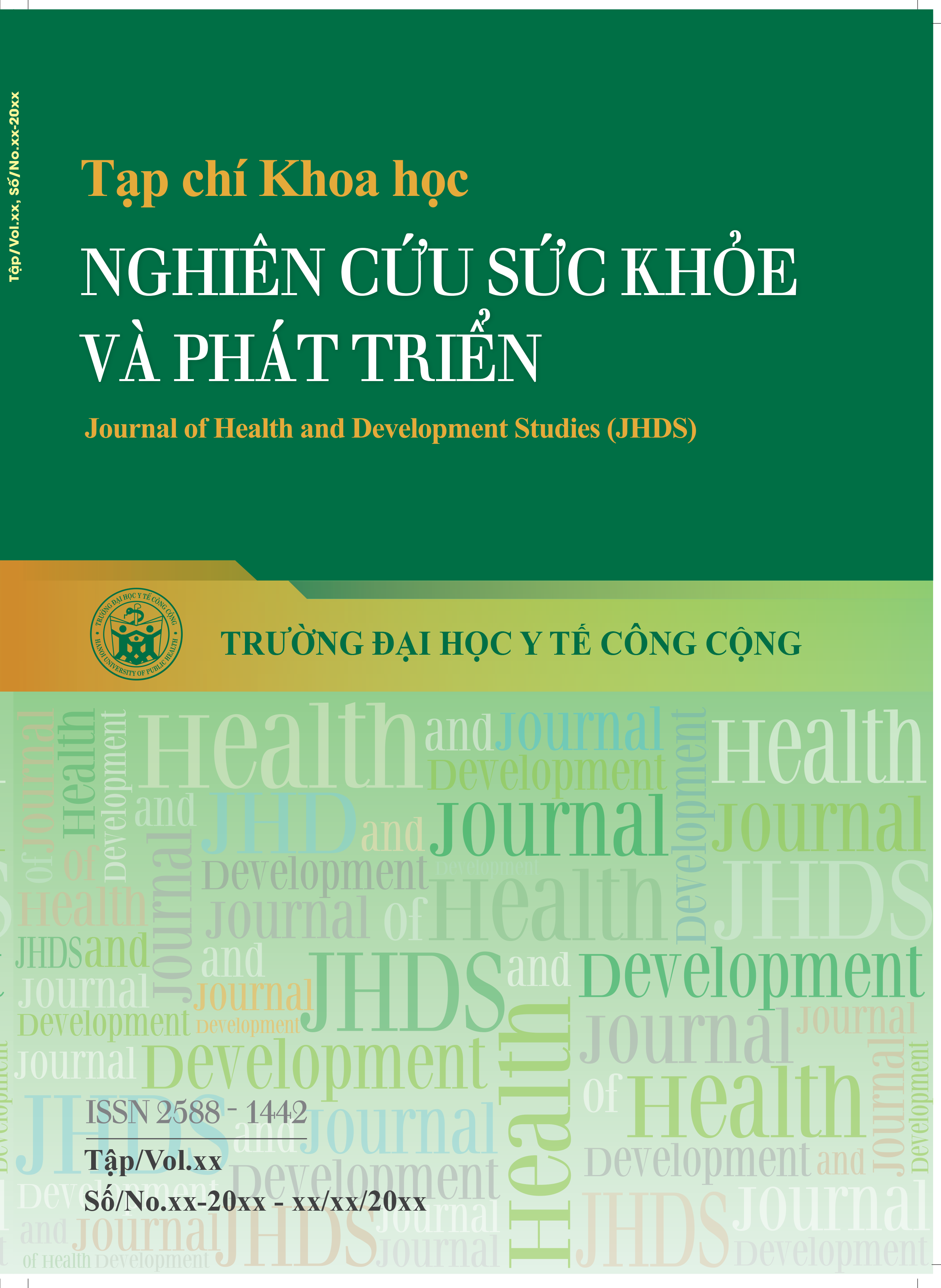Tạp chí
Khoa học Nghiên cứu Sức khỏe và Phát triển
(Journal of Health and Development Studies – JHDS)
Trường Đại học Y tế công cộng
ISSN (Print): 2588-1442
ISSN (Online): XXXX-XXXX
https://jhds.edu.vn
The reliability and validity of depression scales for use in Hanoi high school students: a pilot study
- Mã bài báo : SKPT_22_122
- Ngày xuất bản : 28/04/2023
- Số trang : 125-135
- Tác giả : Nguyen Thi Thu Huong
- Lượt xem : ( 594 )
Danh sách tác giả (*)
- Nguyen Thi Thu Huong 1 - Hanoi Medical University
- Tran Xuan Bach 1 - Hanoi Medical University
- Luu Ngoc Hoat 2 - Phenikaa University
Objective: The percentage of depression in adolescent varied by study area and scale, but according to most of studies using self-reported screening scales of depression indicated that this rate was above 40%. A pilot study was conducted on a small sample size in the fourth wave of COVID pandemic in 2021 to evaluate the validity of the scale and test the questionnaire before conducting a baseline investigation. To assess the validity and reliability of depression scales namely Reynolds Adolescent Depression Scale (RADS) and Centre for Epidemiologic Studies Depression scale (CESD).
Method: A cross-sectional study was conducted among 119 Hanoi high school students who answered online interviews. Data was analyzed by using exploratory factor analysis.
Results: showed that the RADS scale was divided into 4 components (1.Feelings of loneliness, depression, and despair; 2.Feelings of anxiety; 3.Not feeling importance of self-worth; 4.Not getting on well with people) with the Cronbach’s alpha of components ranged from 0.7899 to 0.9445 and general score of 0.9446. The CESD was analyzed into 3 components (1.Feeling depressed, disappointed, insomnia and poor appetite; 2.Feeling difficult to get on well with people; 3.Not feeling happy) with a general Cronbach’s alpha score of 0.8978 and components ranging from 0.6857 to 0.8978.
Conclusion: Factor analysis showed that both scales performed with high validity and reliability, making it possible to conduct future research to accurately assess depression in high school students in Hanoi.
- DOI : https://doi.org/10.38148/JHDS.0702SKPT22-122
- Chủ đề : Xã hội học
- Loại bài báo : Nghiên cứu gốc
- Chuyên nghành : Chuyên Ngành Y
 Thông tin liên hệ : Nguyen Thi Thu Huong
Thông tin liên hệ : Nguyen Thi Thu Huong Email : ngthithuhuong.hmu@gmail.com
Email : ngthithuhuong.hmu@gmail.com Địa chỉ : Hanoi Medical University
Địa chỉ : Hanoi Medical University
Bài báo liên quan
- The reliability and validity of depression scales for use in Hanoi high school students: a pilot study
- The association between Depression, Anxiety and Stress with risk behaviors and past trauma experience among students in Hanoi, 2022
- Preparedness for hospital safety during COVID-19 pandemic: A survey of private hospitals in Vietnam
- Very Late Presentation to HIV Care in Ho Chi Minh City: Social Support and Other Associated Factors
- Health risk behaviors among Vietnamese students aged 13-18 in two districts in Ha Nam province and some associated factors
- Assessing the knowledge, attitude, and practices of using household insecticides among residents and factors related to practices in Vinh Linh District, Quang Tri Province, 2022
- Knowledge and factors related to the understanding of using plastic bags by homemakers in Quan Hau town, Quang Ninh district, Quang Binh province in 2022
- Factors associated with quality of life in outpatient with type 2 diabetes at Ha Dong General Hospital
- A review of government expenditure on National Plan on Action for Nutrition (NPAN) in Viet Nam during 2017-2020
- Mental health of adolescents in COVID-19 social distancing and lockdowns: A scoping review
- Global health officers’ competency gaps on knowledge and skills and its associated factors in Vietnam
- Impact of covid-19 pandemic on the hypertension control: perspectives from health system
Bài viết mới nhất
- Một số trang web hữu ích đối với các nhà khoa học
- Dành cho chuyên gia
- Tạp chí Khoa học Nghiên cứu sức khỏe và Phát triển duyệt tối đa 1,0 điểm ngành Y trong Danh mục Tạp chí khoa học được tính điểm của Hội đồng giáo sư Nhà nước
- CHÚC MỪNG NGÀY BÁO CHÍ CÁCH MẠNG VIỆT NAM (21/6)
- GS.TS Hoàng Văn Minh - Hiệu trưởng Nhà trường 'lọt top' nhà khoa học có chỉ số trích dẫn hàng đầu thế giới

 File toàn văn
File toàn văn